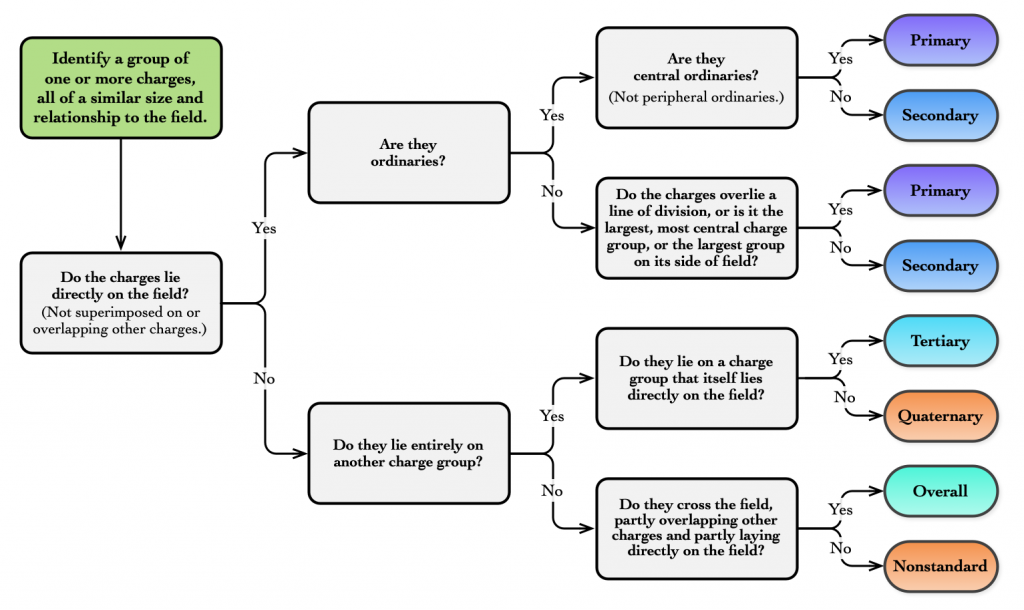Four years ago I posted an adaptation of Yehuda ben Moshe’s “Charge Group Theory” flowchart, intended to guide people in classifying the elements in an armorial design.
The chart I posted was slightly simplified, but I worried that it still might be daunting for beginners, and the recent occasion of teaching a class on charge-group analysis provided a good excuse to revisit it.
The new version reduces the problem to a series of three branching yes/no questions to be asked about any particular charge group.

I think this better reflects the way I actually think when I’m looking at a new armorial design:
- Start by considering all of the charges that lie directly on the field.
- If there are any central ordinaries, they are the primary charge group.
- If there are any peripheral ordinaries, they are secondary charge groups.
- If you haven’t already identified a primary charge group, the largest, most-central set of charges remaining is the primary group.
- Any remaining charges directly on the field are secondaries.
- Then consider charges which lie within or overlap other charges.
- If they lie entirely on a primary, secondary, or overall charge group, it’s a tertiary charge group.
- If they lie on a tertiary charge group, it’s a quaternary group, and not registrable without additional documentation.
- If they cross the field, laying partly on the field and partly overlapping the primary charge group, it’s an overall group.
- If it doesn’t fall into any of the above categories, it’s anomalous, and not registrable without additional documentation.
There are nuances that aren’t fully captured here — like how to classify a divided field with a semy of charges on one side and a single charge on the other — but I think this accurately covers the vast majority of cases, and provides a scaffolding on which to hang the more esoteric details.
I hope that folks find this useful!

One thought on “Identifying Charge Groups Revisited”